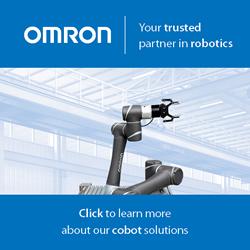What's the Difference Between AGVs and AMRs?
High Performance Inertial Sensors for Robotic Systems
Making Robotic Programming Easier for the Fabrication Industry
Wireless Charging Technology for Autonomous Robotics
AGV Selection Process for 2022 Must Start with Delivery Commitment Guarantee
Digital Transformation and Industrial Robots Outlook
Advancing AMR's with LIDAR
Trends Shaping the Automation Industry
Opinion: EU AI Act Will Stifle Robotics Innovation
Solving Worker Shortages in Food Service With Automation
You Know Your Company Needs Robotics, but Don't Know Where to Start. Here's How.
True Flexibility in your Robotics System
Digital Transformation and the Smart Factory
Robust Drive System Simplifies Mobile Robot Development for the Factory of the Future
Labor Shortages Impact on the Automation in the eCommerce Boom
Records 46 to 60 of 161
First | Previous | Next | Last
Featured Product

